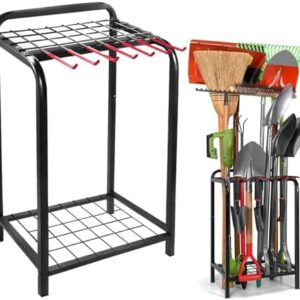If you’ve ever dreamed of having a garden overflowing with beautiful plants and flowers, mastering plant propagation is key to achieving that lush, full garden of your dreams. Whether you’re a seasoned gardener or just starting out, learning the secrets to successful plant propagation can take your gardening skills to the next level.
Propagation is the process of multiplying or reproducing plants through various methods such as seeds, cuttings, division, and grafting. By understanding and practicing these methods, you can save money on buying new plants, preserve rare and hard-to-find varieties, and fill your garden with plants that you love.
One of the most common methods of plant propagation is through seeds. Seeds are a cost-effective way to grow a wide variety of plants, from flowers to vegetables to herbs. To successfully propagate plants from seeds, it’s important to provide the right conditions for germination, such as adequate warmth, moisture, and light. For some plants, scarification (scratching or nicking the seed coat) or stratification (exposing seeds to cold temperatures) may be necessary to break dormancy and encourage germination.
Another popular method of plant propagation is through cuttings. This involves taking a piece of a parent plant, usually a stem or leaf, and encouraging it to develop roots and grow into a new plant. This method is often used for plants that do not produce viable seeds or for species that do not come true from seed. To successfully propagate plants from cuttings, it’s important to take cuttings from healthy, disease-free plants and provide the right conditions for root development, such as a well-draining growing medium and adequate moisture.
Division is another common method of plant propagation, especially for perennials and ornamental grasses. This involves dividing the root system of a mature plant into smaller sections, each with its own roots and shoots, to create new plants. Division is best done in the spring or fall, when plants are actively growing but not under stress from extreme temperatures. By dividing plants, you can rejuvenate overcrowded or overgrown clumps, increase the number of plants in your garden, and share plants with friends and neighbors.
Grafting is a more advanced method of plant propagation that involves joining two different plant parts to create a single, new plant. This method is often used to create new hybrid varieties or to propagate plants that are difficult to grow from cuttings or seeds. Grafting requires skill and precision, as well as the right tools and materials, such as rootstock, scion wood, and grafting tape. With practice and patience, you can master the art of grafting and create unique, custom plants for your garden.
When it comes to mastering plant propagation, there are a few key secrets to success that can help you achieve the best results. First and foremost, it’s important to start with healthy, disease-free plants as your parent material. Plants that are stressed, diseased, or weakened are less likely to propagate successfully and may transmit diseases to their offspring. By choosing healthy plants, you give your new plants the best possible start in life.
Second, providing the right growing conditions is essential for successful plant propagation. Different plants have different needs when it comes to light, temperature, moisture, and nutrients, so it’s important to research the specific requirements of the plants you are propagating. By creating the ideal growing environment, you can encourage healthy root development, strong growth, and successful propagation.
Third, patience is key when it comes to plant propagation. Some plants may take weeks or even months to root and grow into new plants, so it’s important to be patient and consistent in your care. Checking on your plants regularly, adjusting their growing conditions as needed, and providing gentle encouragement and support can help your new plants thrive and grow into beautiful additions to your garden.
Lastly, don’t be afraid to experiment and try new methods of plant propagation. Gardening is an art as much as it is a science, and there is always room for creativity and innovation. By experimenting with different propagation techniques, exploring new plant species, and learning from your successes and failures, you can expand your gardening skills, grow your plant collection, and create a garden that reflects your unique style and personality.
In conclusion, mastering plant propagation is a rewarding and fulfilling skill that can enhance your gardening experience and bring new life to your garden. By learning the secrets to successful propagation, such as choosing healthy plants, providing the right growing conditions, being patient, and experimenting with new methods, you can create a garden that is filled with beauty, diversity, and abundance. So grab your gardening gloves, roll up your sleeves, and get ready to propagate your way to a garden paradise!






